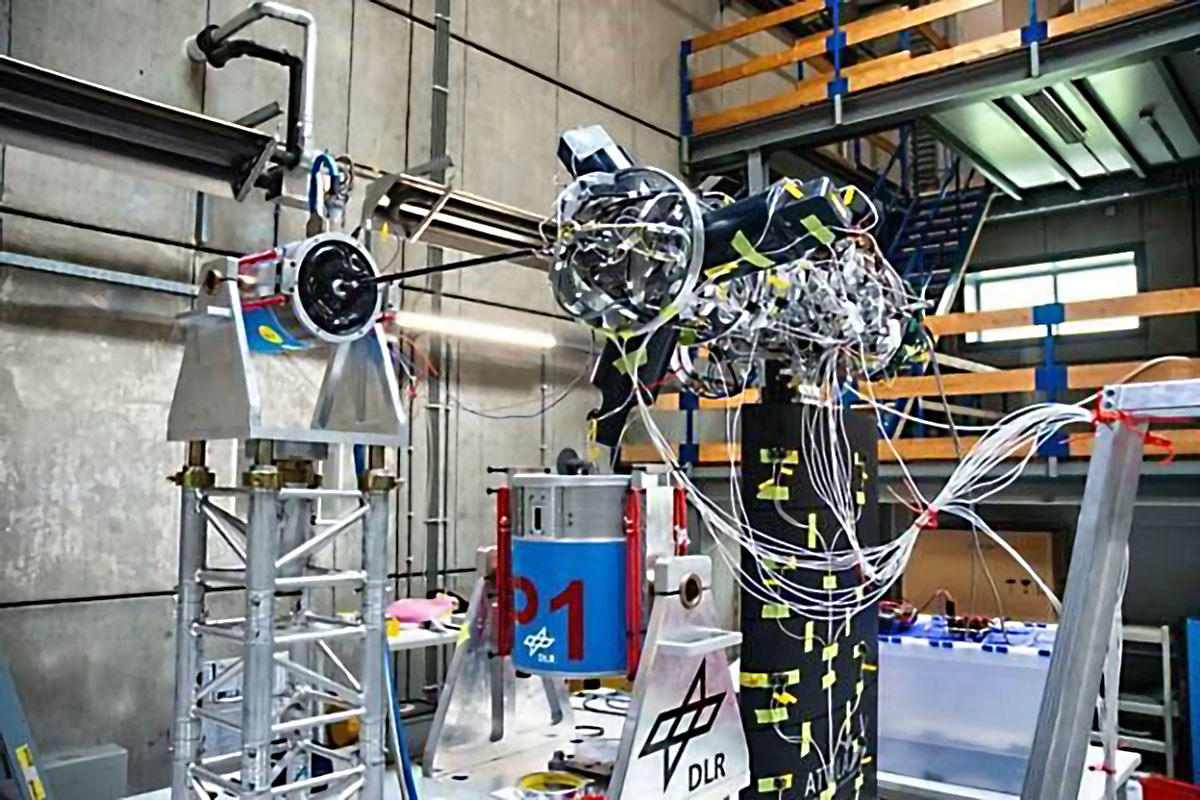Another milestone for the ATTILA project! The DLR-Institut für Aeroelastik from the German Aerospace Center (DLR) and Royal NLR recently completed a comprehensive ground vibration test (GVT) of the ATTILA tiltrotor wind tunnel model at the large low-speed facility (LLF) of DNW – German-Dutch Wind Tunnels.
The GVTs are aimed at the dynamic characterization of the ATTILA model prior to whirl flutter testing in the LLF later this year. Tiltrotor whirl flutter is a complex aeroelastic instability involving coupled rotor, pylon and wing motion. The GVTs and subsequent model scale wind tunnel tests are part of a comprehensive analysis and testing effort that is taking place within the ATTILA project.
The GVT team from DLR Göttingen brought their mobile suite of dedicated instrumentation, shakers and data processing tools to test and characterize the vibration response of the tilt rotor model. The data generated from this test will be used to update the simulation models. Furthermore, the internal acceleration and strain instrumentation in the ATTILA model were measured and compared to the GVT results for verification purposes. These sensors will be used by DLR for online assessment of the aeroelastic stability during wind tunnel testing by real-time operational modal analysis. Engineers from Leonardo Helicopters Division assisted during the test activities, lending their expertise on tiltrotor dynamics.
The test activities took place over a period of 5 days and provided valuable information on the dynamic characteristics of the ATTILA model. The validity of the aeroelastic design was assessed and the tests confirmed low levels of structural damping and minimal nonlinearity in the primary modes of interest. Next steps after data processing will involve updating the numerical structural dynamics models that support the ATTILA design, as well as the related whirl flutter predictions, prior to tunnel entry.
For additional information: https://reports.nlr.nl/items/092c5cd3-72b1-4a07-a52b-de37d32e76f0
